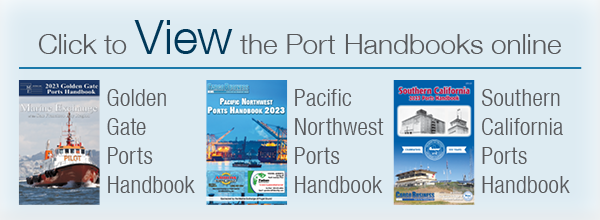|
By William DiBenedetto, CBN Feature Editor
The importance of intermodal rail and trucking to the supply chain is becoming even more apparent, due to the current economic environment, the rise of the megaships, technology advances and the pending — but still somewhat uncertain — impact of the Panama Canal expansion in June.
Railroads such as BNSF, UP and CSX are making major infrastructure investments, and 3PLs are working with customers to help prepare for changing shipping patterns and timetables. It's a question of step up now, or fall behind.
"We are in a period of rapid change," says Jean Francois Arvis, senior economist of trade and competiveness at The World Bank. "Macroeconomic volatility and shifts in trade patterns will result in the rebalancing of global logistics and trade. In addition, structural changes in terms of workforce demographics and technological innovation will determine the shape and the speed of change within logistics."
"As trucking infrastructure decays and public and private organizations continue to invest in intermodal facilities, rail is quickly becoming the preferred means of transport for both commercial and industrial goods," writes Jim Clewlow, chief investment officer at CenterPoint Properties, in the SIOR Pulse Blog. He says traditional truck shipping, though still crucial for last-mile delivery, "simply doesn't accommodate or align with modern supply chain challenges, including growing highway congestion, the ongoing truck driver shortage and organizations' elevated focus on sustainability."
Thus businesses are turning to the advantages and synergies presented by intermodal shipping and intermodal-adjacent real estate. In 2015, the U.S. moved more than 300,000 TEUs per week, on average, across domestic and international activity, Clewlow writes. Chicago, home to many railroad-operated intermodal yards and industrial parks — including BNSF, CSXT, CN, Norfolk Southern, and UP to name but a few — moved 7.5 million containers in 2014, up 27 percent from 2009. "This phenomenon is far from unique to the Midwest. Between 60 and 70 percent of imports that arrive at the Port of Tacoma move directly onto rail, providing rapid market access across the country," he says.
The logistics, transportation and real estate communities will have to deal with a handful of intermodal-related changes in the coming months, from new retail distribution models and emerging storage needs to the diversification of intermodal users.
In his blog post, Clewlow cites three major shifts:
• The rise of "hub and spoke" models:
"As online and brick-and-mortar retailers recognize the inherent advantages of intermodal transport, they're beginning to converge around a common distribution model. Driven in part by the e-commerce boom (and consumers' growing expectations for same and next day delivery), businesses today face pressure to reach population segments across the country while keeping expenses down. To accomplish both goals, cargo owners are strategically developing regional distribution centers near intermodal hubs along with smaller 'spokes' to serve individual markets."
• Increasing demand for storage:
Businesses are also seeing the need for additional storage space near major markets and intermodal hubs. "In 2016, more cargo owners will be on prowl for additional, potentially built-to-suit, storage centers. Unsurprisingly, properties adjacent to or integrated within existing intermodal yards may be in especially high demand. In the last year and a half, we've already seen major logistics providers including Quala and California Multimodal develop their own storage facilities at intermodal centers in Savannah and Joliet, respectively."
• Diversification:
While intermodal has always been a staple for
|

retail businesses and international manufacturing, Clewlow predicts the next year or so could bring an influx of new sectors into the fold. Supply chain flexibility is becoming a "top priority" for leading export industries such as the plastics, agriculture and machinery sectors. "The tight rail, inland and coastal port integration that intermodal offers is a invaluable benefit for businesses that need to ship bulk and perishable cargo fast." Tenants in these niche sectors are likely to bring a new set of facility needs when developing and leasing intermodal-proximate industrial space, so paradigms and pain points will inevitably emerge. "Unchained from traditional supply chain constraints and expenses, businesses have room to experiment with alternative distribution models and nontraditional industrial locations."
Meanwhile, the CenterPoint executive says cargo owners will "tinker with their intermodal efforts over the next year, focusing specifically on improving flexibility, mitigating costs and providing superior customer service."
Curtis Spencer, president of IMS Worldwide, touched on many of the same "change agents" in a recent report for Area Development Magazine. He says railroads are "looking for ways to aggregate services into inland 'hubs' where they can operate more efficiently and service a greater number of clients." What is emerging from the desire for efficiencies by railroads are logistics hubs, sites where the rail carrier's intermodal services "intersect with logistics distribution services."
Large ships at mega ports "create huge volume spikes in cargo to be moved inland or to be moved to import/regional distribution sites near port," Spencer continues. Consequently, carriers are looking into aggregating their services to inland or port load centers in key markets where it makes economic and distribution sense. In conjunction with that, railroads are finding ways operate more efficiently by creating a parallel policy of aggregating demand in key markets. In fact, rail carriers now seek to change the model for delivery of goods by "aggregating all rail-served goods into single or multiple logistics parks in their markets, which is similar to how they concentrate intermodal delivery to a single ramp," he says.
Spencer forecasts that competition and collaboration between U.S. East Coast and West Coast rail carriers, emerging corridors for rapid rail services, and the environmental desire to displace trucks with short- and long-haul rail are all up-and-coming trends in the industry.
He explains that all-water routes to the U.S. East Coast and the promise of greater lift capacity after the Panama Canal expansion opens "provide the traditional East Coast carriers with new mid-country reach on a competitive platform with U.S. West Coast and land-bridge service to mid-country markets."
New corridors — Heartland and Crescent/Norfolk Southern, Triangle/CSX, and Meridian Speedway/Kansas City Southern/ Norfolk Southern — provide both north-south and east-west collaboration and track-sharing in order to reduce truck traffic, provide expedited service, and reduce pollution and congestion at the ports and at inland destinations, he adds.
Further, Union Pacific and Norfolk Southern have strengthened their collaborative efforts and the BNSF and CSX are doing the same.
In short, the intermodal industry is changing fast, creating new models and partnerships as it rolls with the changes, answering the call for faster, more consistent transit and distribution channels in ways that will better serve its customers.
Next: Can technology, mergers and "convenience logistics" boost intermodal and trucking?
|




